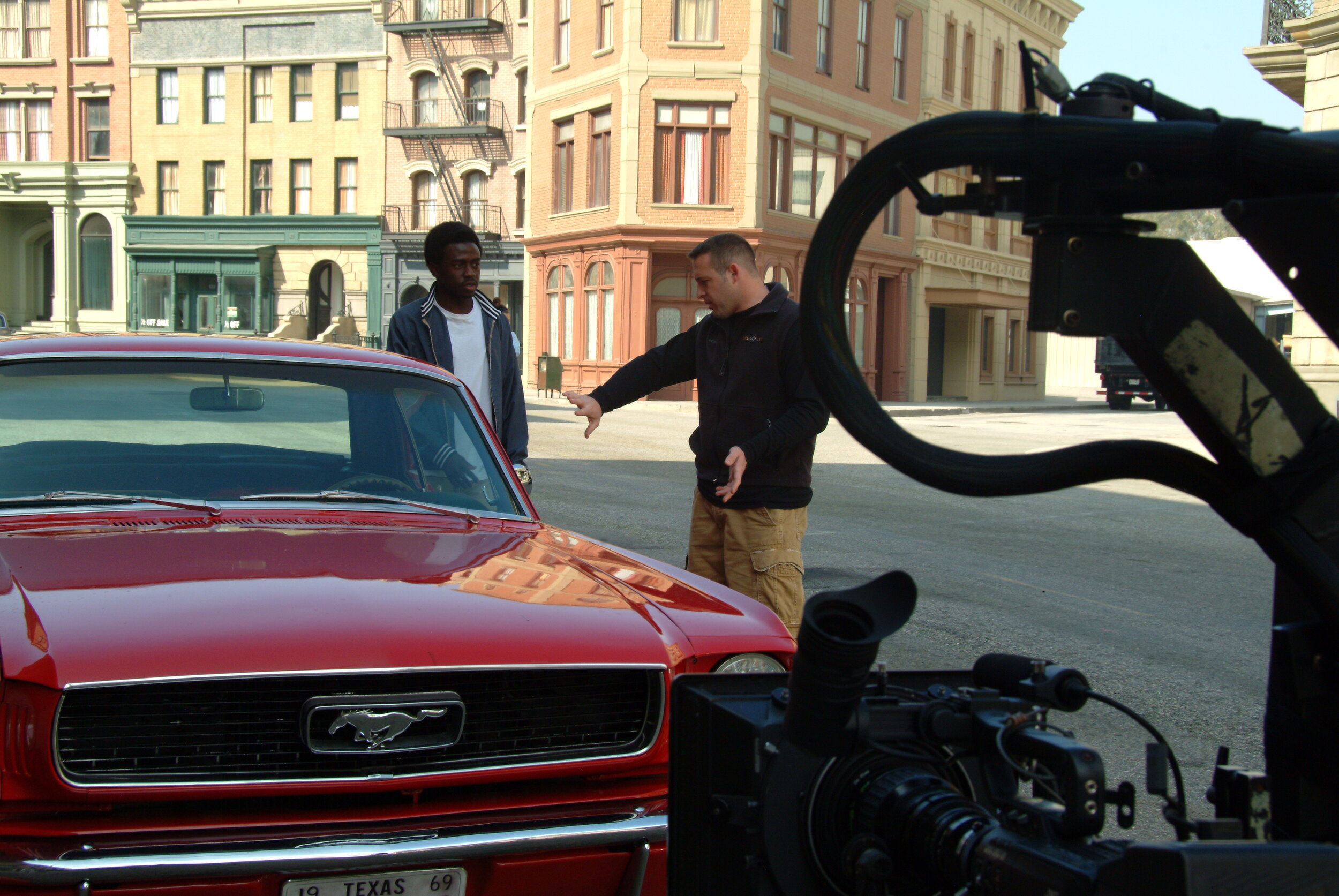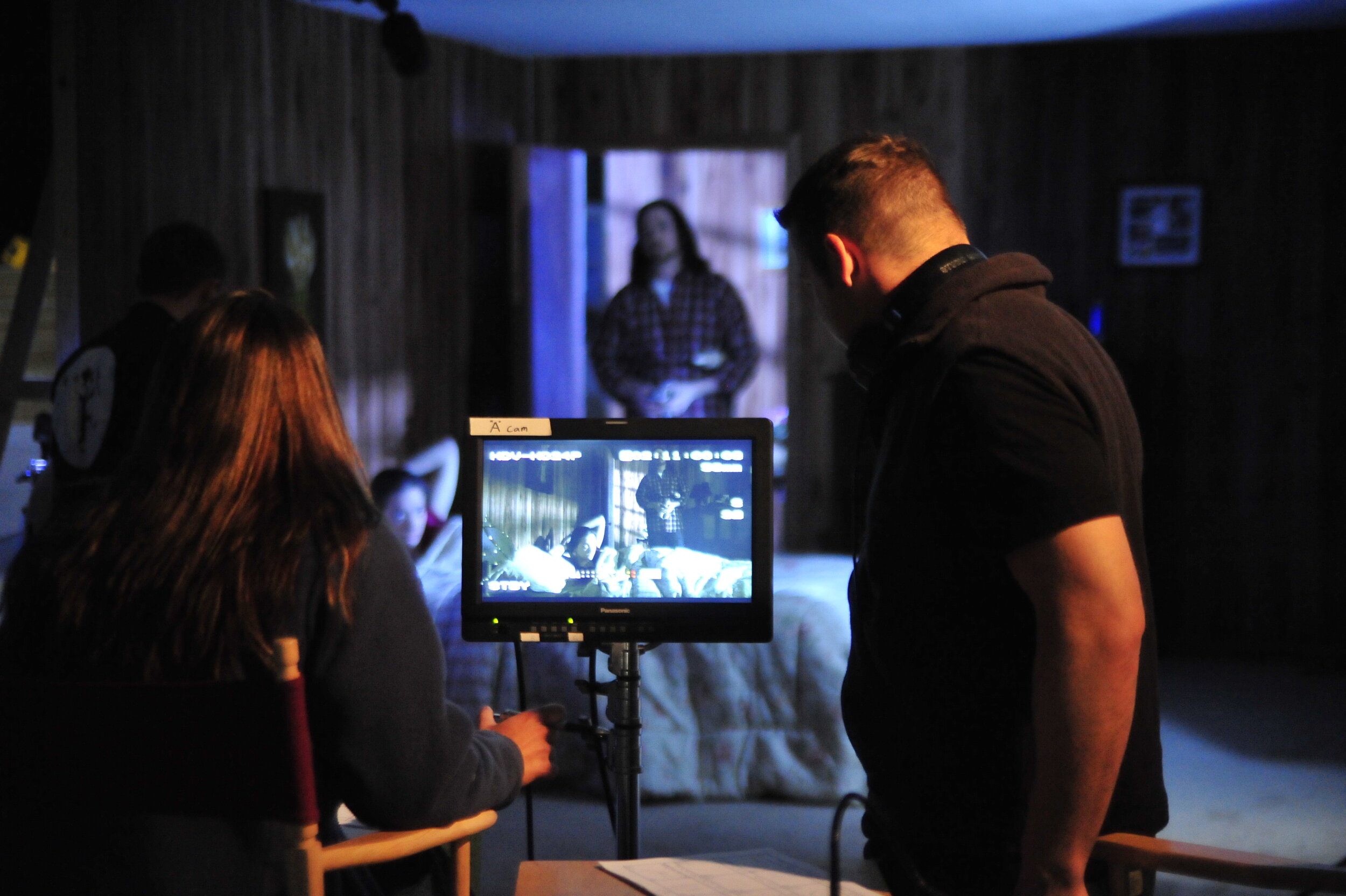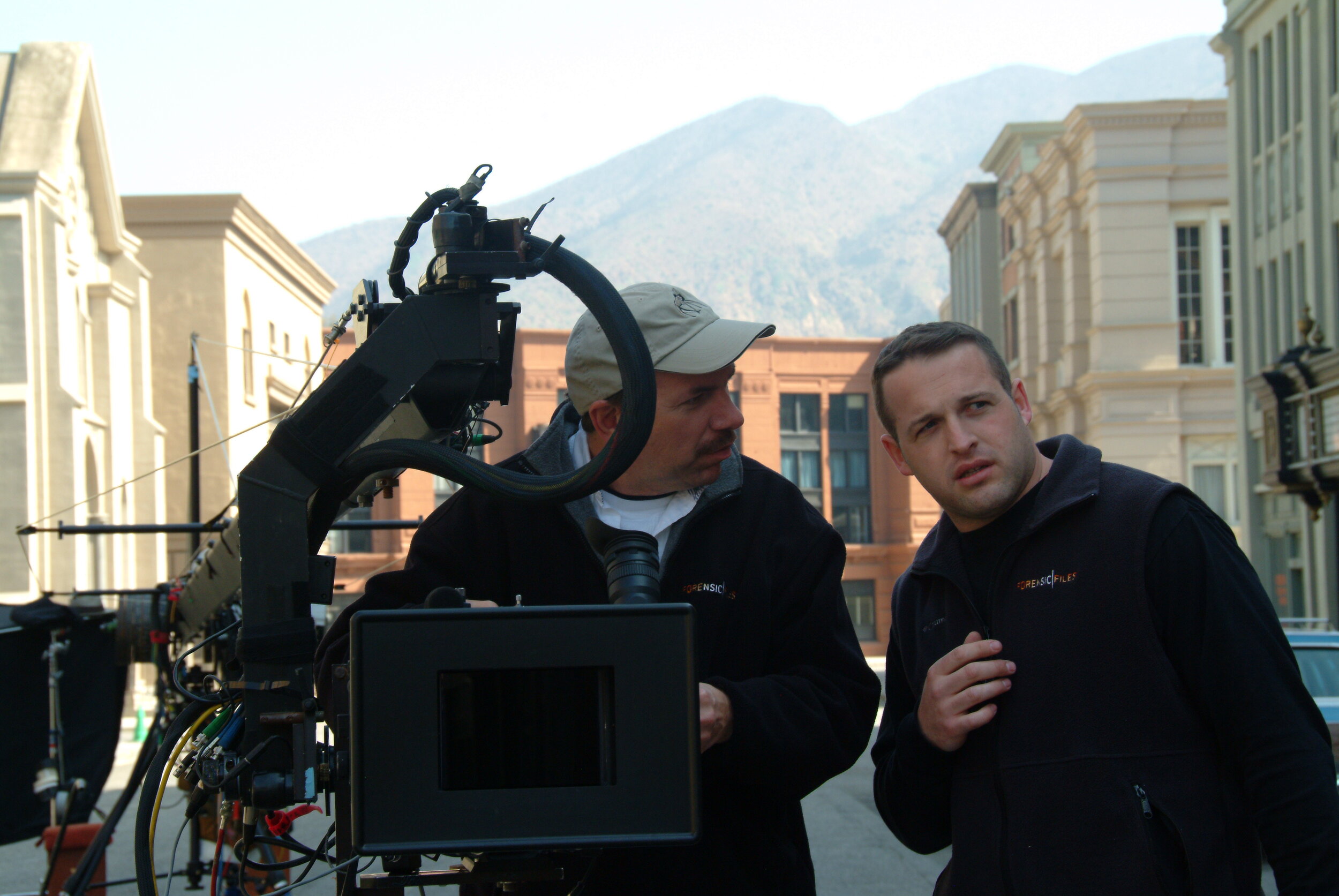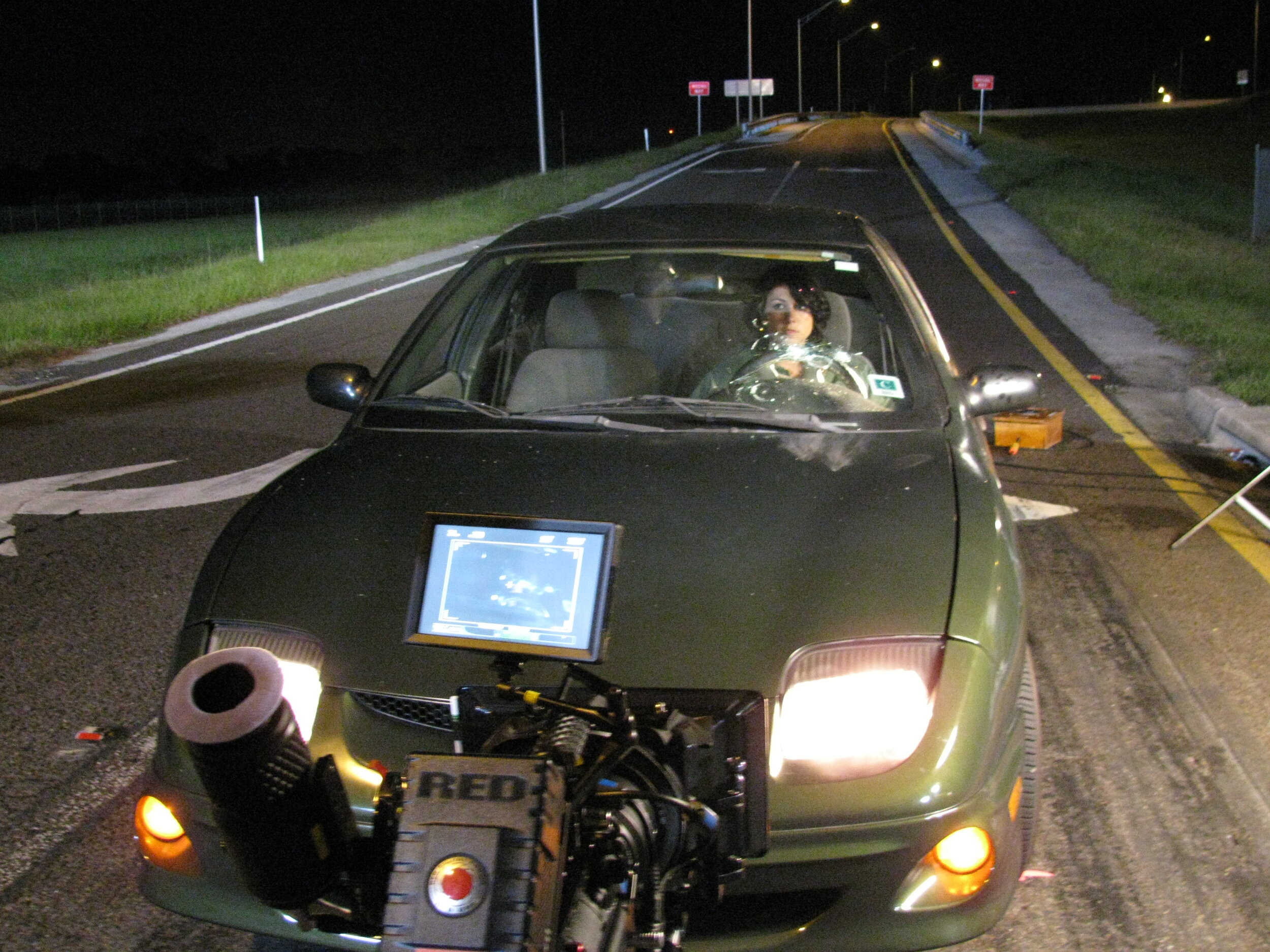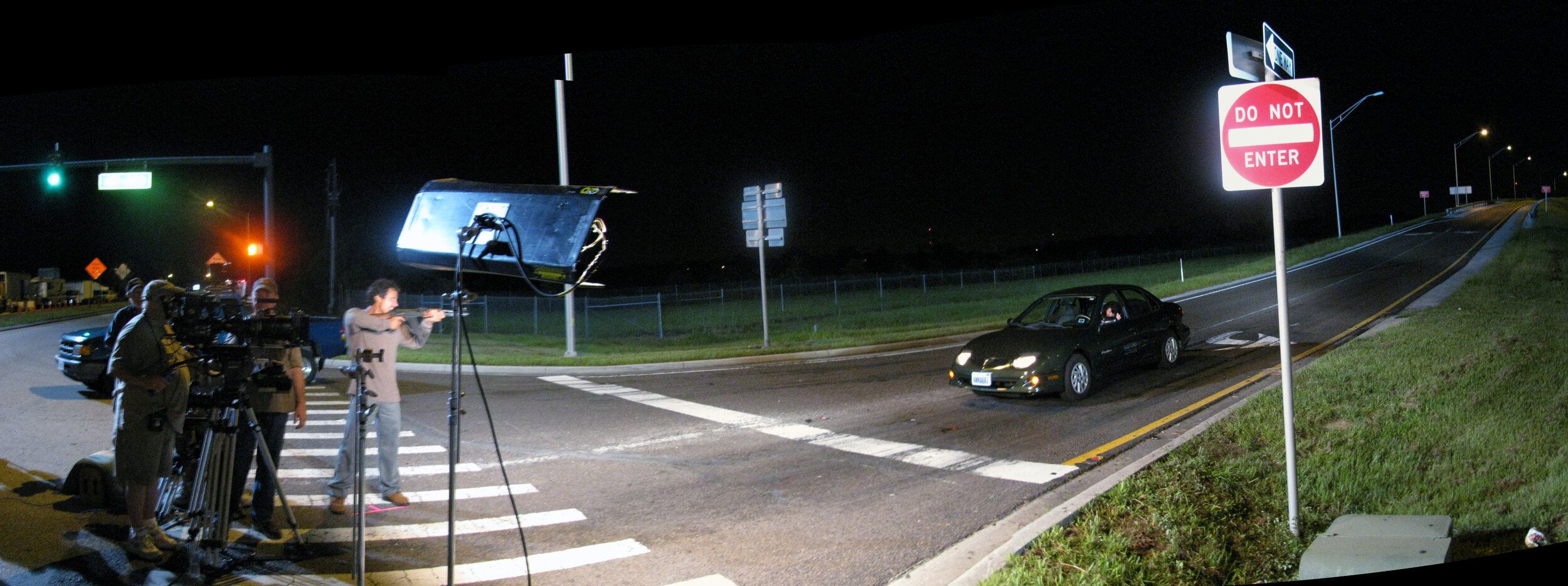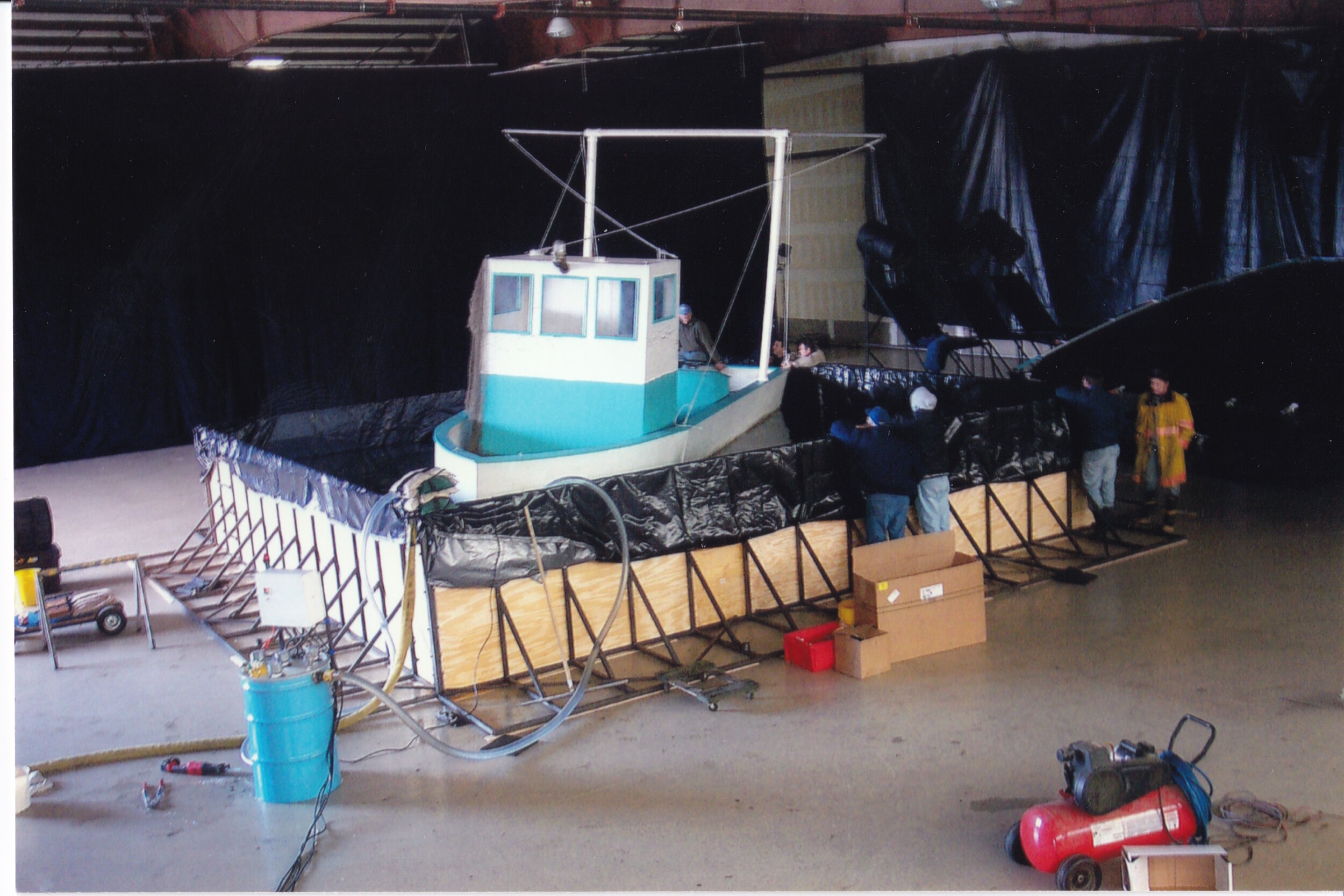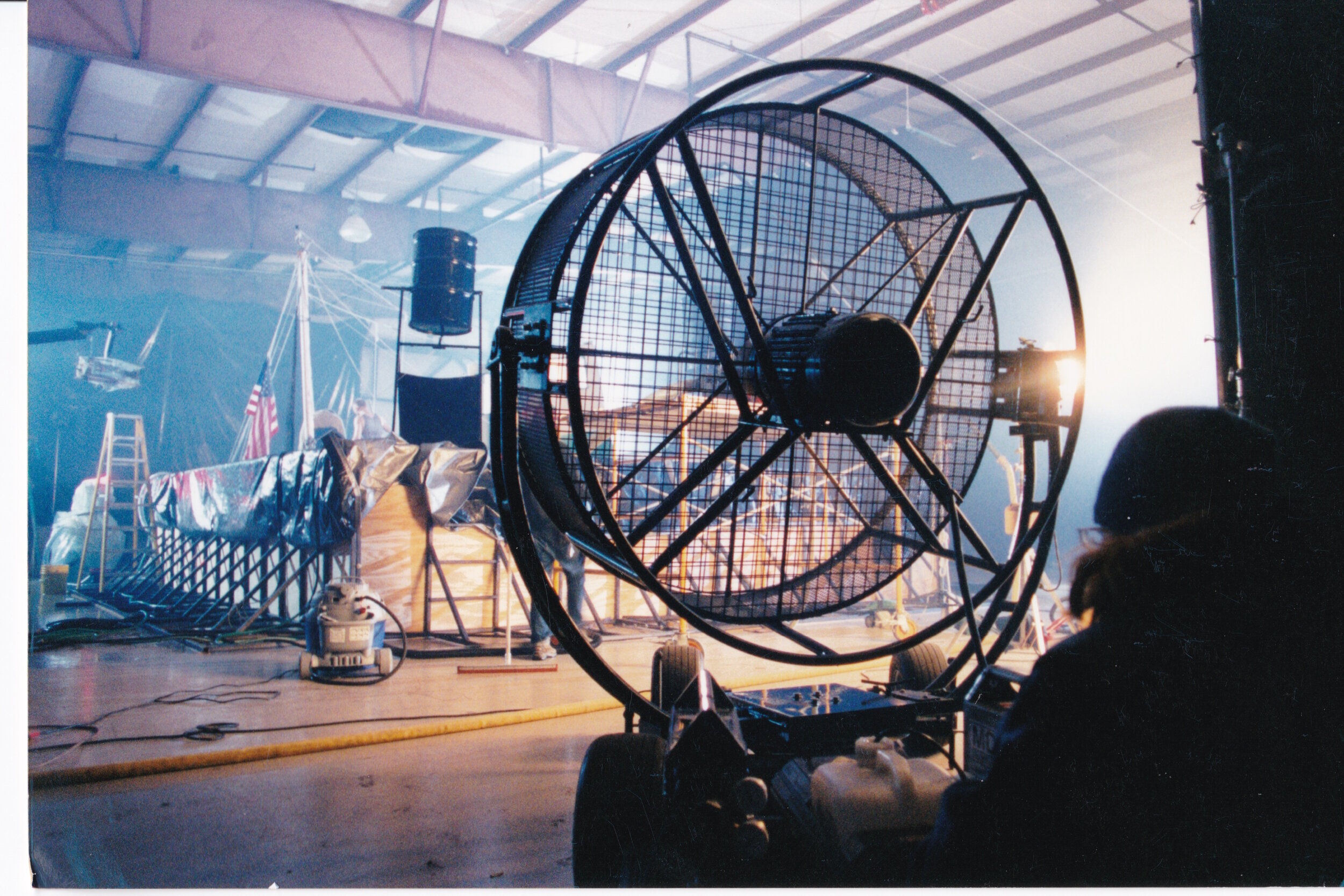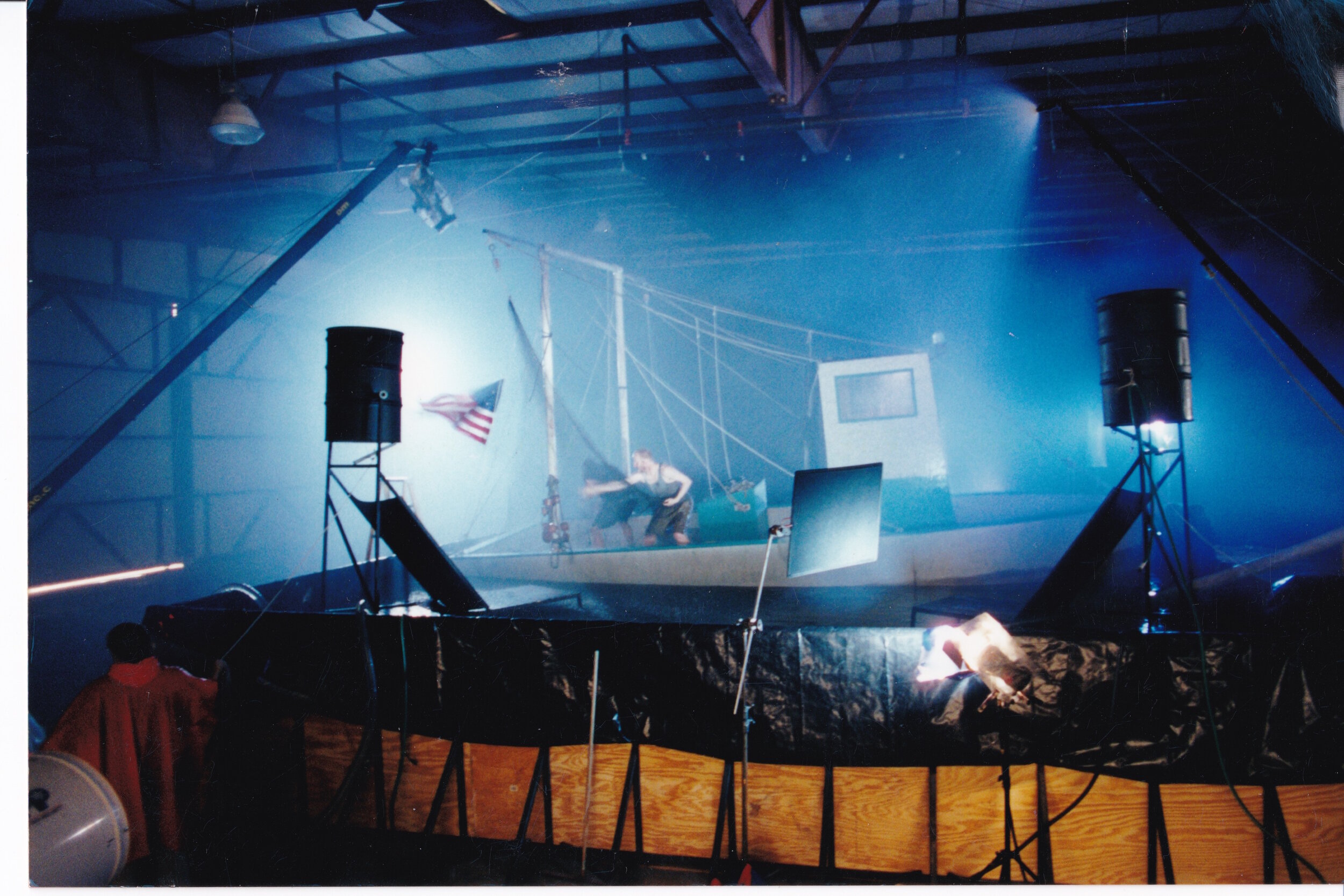Picture provided by: Michael Jordan
by: Maddie Rowley
Forensic Files is a fan favorite among our Hunt A Killer following and for good reason—it’s a cult classic! Many of you fall asleep to famous narrator, Peter Thomas’ ever-steady and soothing voice. There’s just a certain “comfort factor” when it comes to the show. Maybe it’s the tinge of nostalgia or the strong storytelling that brings you back to watch the same episodes over and over again. You know who the killer is, and yet you keep cycling through those familiar 20-to-22-minute-long episodes. It’s addicting!
So when Forensic Files Reenactment Director Michael Jordan reached out on Instagram and thanked me for shouting out Forensic Files, I immediately asked him if he’d be interested in an interview and he agreed.
Jordan directed the reenactment scenes in over 276 episodes of Forensic Files, and has done some pretty wild things to make sure the scenes are as accurate as possible—he even had a water tank built in an airplane hangar for the reenactment in “Fishing for the Truth” (Season 9, Episode 26) but we’ll get to that later! Read on for some fascinating behind-the-scenes Forensic Files tidbits.
Me: What did your job entail as the Reenactment Director?
Jordan: Once the case was pitched, a field crew would go out and conduct all the interviews and shoot B-roll, and then they’d make a rough cut and a script out of that. This is where the reenactment process started. We’d get the pictures of the victims and the killer, send them off to the casting agency and they would cast lookalikes. Then I’d go through all the crime scene pictures and videos. I watched hours of crime scene videos to look for key components that we needed to match. What was the victim wearing? What did the house look like? Did the walls have a particular wallpaper that we needed to match?
Part of my job was also to break down each scene to figure out how to do each shot and what to include in each shot. I always made storyboards for the more difficult scenes so when we were on set weren’t wasting time.
Me: What was it like to see all those pictures and videos from crime scenes? Was it difficult?
Jordan: The first time I watched a crime scene walk-through, I was kind of amazed at how graphic it was...after awhile I kind of became desensitized to it because I’m looking at them in a different light. I’m looking at these pictures and videos for technicalities and the things we need to match, what’s the evidence? Is there a weapon there? Is there a towel next to the body that has a certain pattern? I did see some pretty gruesome crime scenes. Anytime a body was burned or if a body was pulled out of the water, those were the more disturbing crime scene videos and photos.
Forensic Files Fact Box:
90% of the Forensic Files Reenactments were filmed in Allentown, Pennsylvania in a 12,000 square foot studio.
In the 276+ episodes Michael Jordan filmed with special effects and stunts, no one was ever hurt.
The average crew for a Forensic Files episode was 5 to 10 people.
Me: I didn’t realize how detail-oriented the reenactment scenes were—even down to matching wallpaper patterns and towels. It sounds like you tried to be as accurate as possible with these scenes.
Jordan: Yes, Paul Dowling, the show’s executive producer and creator, felt like the reenactment scenes helped move the story forward, so our reenactments were more active than in other crime shows I’ve seen. Paul used the reenactments as a tool in his storytelling process to help engage the audience and because he was doing that, the reenactments had to be seamless because we were cutting between the actual crime scene videos and pictures to our reenactments. So if there’s any slight difference it could be very jarring to the audience.
Me: How long did it take to complete all the reenactment scenes from one episode?
Jordan: Our seasons were pretty demanding. We would be shooting for one episode and during lunch, I’d be reading the script for the next episode we’d shoot the week after. It was a constant rotating process. From beginning to end one episode takes about two months to complete.
Me: What was your all-time favorite reenactment scene that you directed?
Jordan: Out of the 300 episodes I worked on in total, my favorite episode was called “Water Logged” (Season 14 Episode 11). It took place in Tampa Bay. The killer, Oba Chandler, met this mother and her two daughters while they were vacationing down in Florida. He offered them a sunset cruise on his boat, and when they were out in the water, he held them at knifepoint, tied them up to cinder blocks and threw them into the water, so they drowned. It was a terrible story.
We filmed in St. Pete, Florida for this scene. It’s challenging to shoot on the water but we got a beautiful shot.
Me: It sounds like these scenes can get pretty expensive. What was the budget like for a Forensic Files episode?
Jordan: The budget is basically on a sliding scale depending on the crime. If someone gets shot on a highway, you know you’re going to need those exact cars for the shot, so that might be more expensive. If the crime is a perp blowing up a truck with a bomb, we blew up the truck. Other shows might do more of a lighting effect with smoke, but we’d hire a special effects person. We did a lot of crazy stuff.
Paul Dowling loved the reenactments so much, so he told me, “Mike, I don’t mind spending the money if it shows up on-screen.” Not many executive producers of true crime shows will ever say anything like that. Paul is a genius. He saw how successful the show was going to be and because of all his efforts, which he passed down to the entire crew, the show is just as popular, maybe even more popular now than it was back then.
Me: What was the most difficult reenactment you directed?
Jordan: The most difficult was probably the scene for an episode called “Fishing for the Truth” (Season 9, Episode 26). It was about two men—a captain and his first mate—out on a shrimp boat in the Gulf of Mexico when a storm came through. I had three or four months to prepare for this episode and I had to think about how to do this. I’m sitting at my desk and I’m playing around with a shoebox and I made a little paper boat and put it in the shoebox.
I had a guy build a water tank and a fake boat in a big airplane hangar. We had to make sure the boat could list like a real boat would in a storm, so we brought in rain towers, lightning strike machines, and we needed waves, so we filled up 55-gallon drums and made a pulley system to create the waves.
In the episode, the first mate was coerced into making a confession that he had and killed the captain before throwing him overboard, so we had to film that version and then the version that showed what really happened.
Thanks so much to Michael for his time, and if you want to ask him any questions, comment below or follow him on Instagram at @mjordanpictures!
Question:
Why do you think you watch the same Forensic Files episode more than once, even though you know what happens and who the killer is? I’m calling this the “Forensic Files Phenomenon,” so let us know in the comments below!


